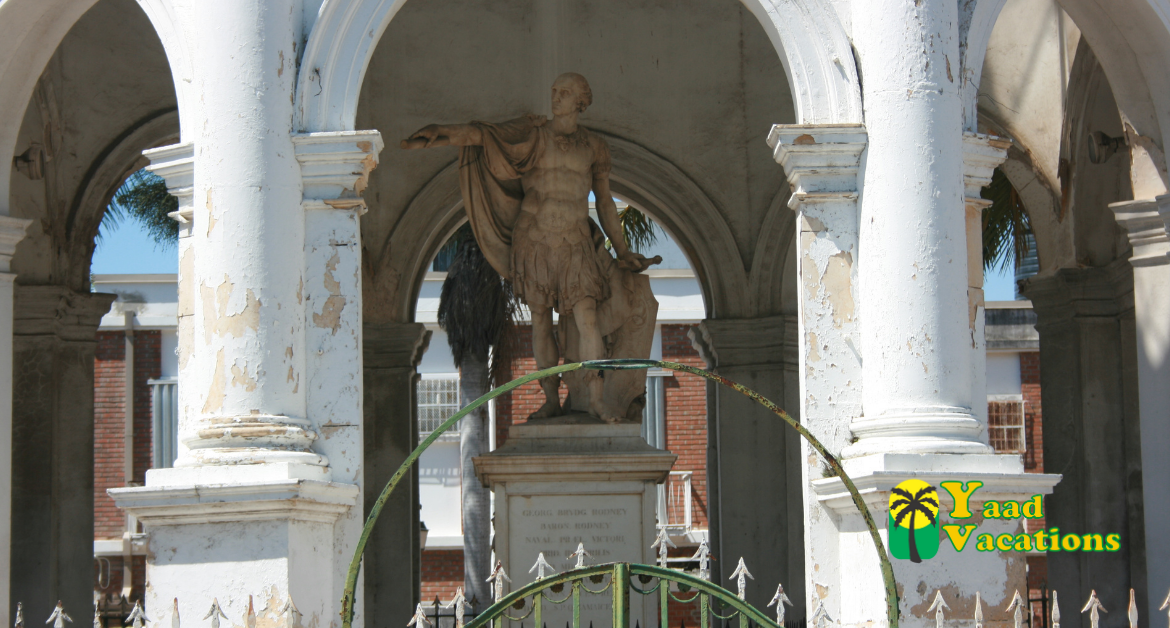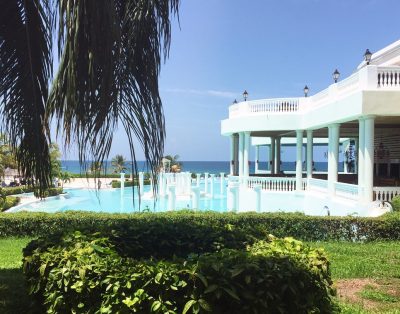Discover the First Capital Of Jamaica, Spanish Town
We all know about Kingston, the capital of Jamaica, and Montego Bay, the second. However, there is so much you need to learn about this island’s rich history. There is another capital of Jamaica, where the kings, queens, and other royalties used to live and enjoy the best on this island paradise. I am talking about Spanish Town. Come and discover the first capital of Jamaica, Spanish Town.
The First Capital of Jamaica, Spanish Town
Spanish Town is in the parish of St. Catherine. The history of this Town speaks to the culture of the entire island.
Christopher Columbus discovered Jamaica in 1494. These Spanish settlers were there until the British came in 1665. Slavery was already here, and after the British soldiers removed the Spanish, the British established it on a grander scale.
The History of Spanish Town
Excerpts from DiGjamaica:
The history of Spanish Town dates back to 1534, when it was settled by the Spanish and established as the nation’s capital city. The original name was Villa de la Vega (City on the plains). Captured by the British in 1655, it was renamed St Jago de La Vega as the First Capital of Jamaica and continued to serve as Jamaica’s capital for another 217 years. Today, the Town remains one of the oldest continuously occupied places in the Western hemisphere. It still holds much of Jamaica’s cultural dynasty, yet it is as though no one remembers this Town.
With this article, Spanish Town in St. Catherine will become another best tourist attractions. Consequently, it was once a tourist attraction for many vacation destination properties to schedule tours. The square requires a facelift, and in truth, it is still the best there is in Jamaica.
The Spanish Town of today is but a shadow of its former splendour. However, there is a lot to see, and the places of interest are historical treasures. History never dies. And Spanish Town has its part to play in the world, knowing Jamaica’s contribution to its development, especially in the Western Hemisphere.
Let’s explore the History of Spanish Town the First Capital of Jamaica.
Emancipation Square Spanish Town
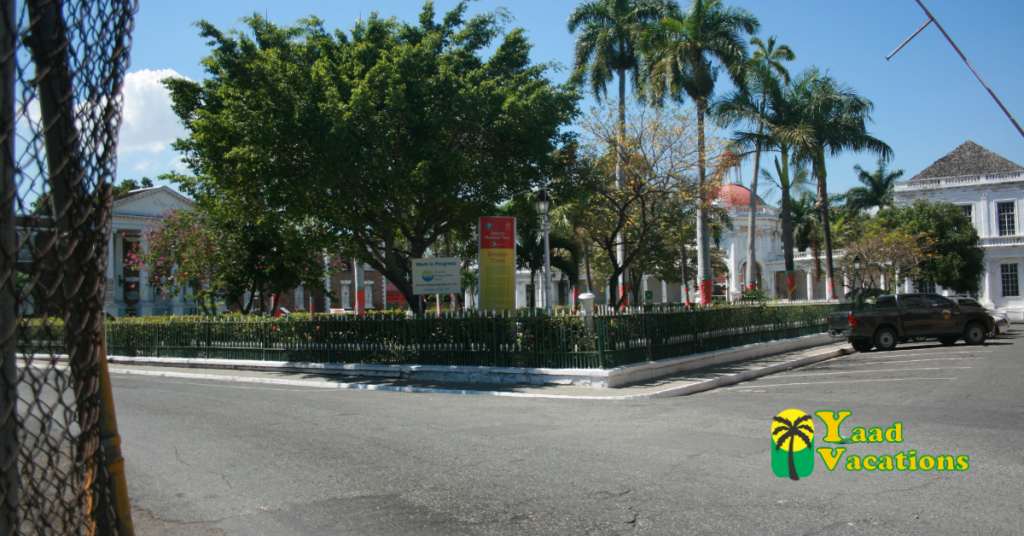
Photograph of Emancipation Square, Spanish Town by: Jermaine McKenzie
The former town centre, Emancipation Square, is almost square in construction. It houses four important buildings pertinent to the city in the 1600-the 1800s. Unfortunately, the Spanish Town’s Emancipation square was severely damaged by fire and the 1692 earthquake. Restoration of parts of the buildings remains to this day. However, in need of refurbishing.
Old Kings House
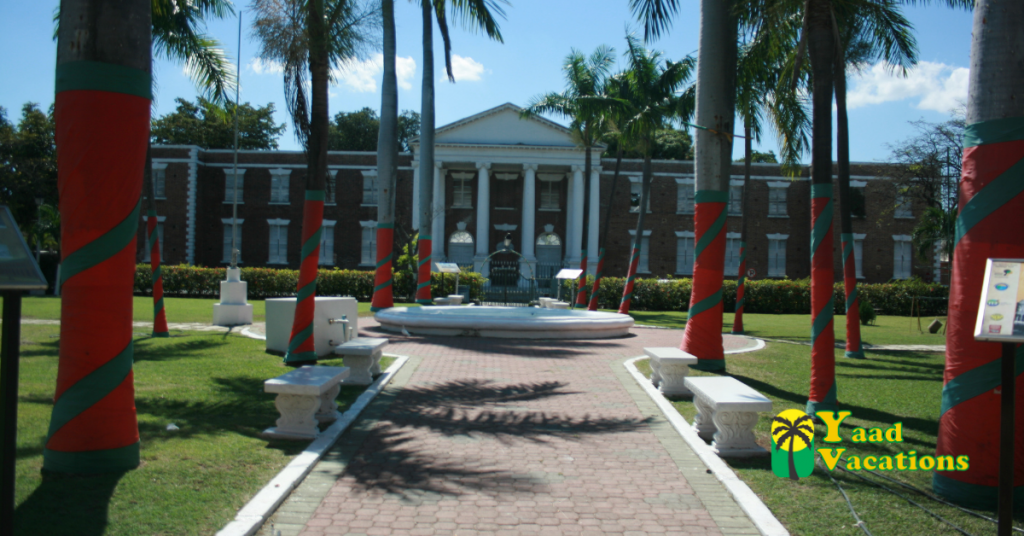
The building was constructed in 1762 as the new official residence for the Governor on the site of the Old Spanish Hall of Audience. The mansion is of the Georgian style of the day. In 1838, the Jamaican Emancipation Declaration was read from its steps. Unfortunately, the structure was almost destroyed by fire in 1925, leaving only the main eastern façade and the stables. However, the façade is renovated, and the stables house the Peoples Museum of Crafts and Technology.
The Old House Of Assembly Spanish Town, The First Capital of Jamaica
The Old House of Assembly was also constructed in 1762. The Town of Spanish Town is no longer the country’s capital, as Kingston became the island’s capital in 1872. The Old House of Assembly was once for various activities, and today is the St Catherine Parish Council.
Rodney’s Memorial
Rodney’s Memorial was erected to honour celebrated Admiral Lord George Brydges Rodney. Lord Rodney led the British to victory over a French fleet that had attempted to invade Jamaica in 1782. The Memorial is said to have cost £31,000. It was to resemble the Roman Emperor and was sculpted by the famous English sculptor John Bacon in 1801. Today, the Jamaica Archives, home to the island’s documented history, is at the back of the formidable Rodney statue in the buildings.
The Old Court House Spanish Town The First Capital of Jamaica
The Old Courthouse was built in 1819. The site was originally a cemetery and later a Chapel. It was first an arsenal and later a courthouse. The upper level of the building became the Town Hall. A point of interest is that all the buildings on the site were destroyed in one way or another – rumour has it that when the cemetery was built, it was with a warning: “ill to anyone who uses this site for any other than its originally intended purpose.” The building was gutted by fire in 1986. The outer casings of the structure still exist and are perfect for an attraction.
The Spanish Town Cathedral
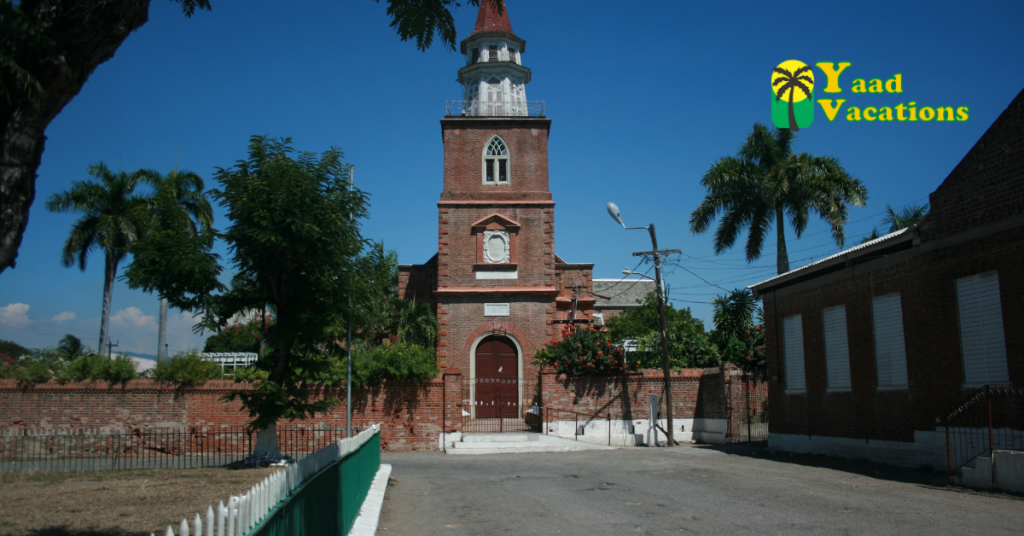
The Spanish Town Cathedral, also known as St Catherine Parish Church or the Cathedral Church of St James, is the Roman Catholic Chapel of the Red Cross site by the French in 1525. The English destroyed it after they captured Jamaica from the French in 1655. However, it was levelled by a hurricane in 1712 and rebuilt in 1714. The church became the first Anglican Cathedral outside of England in 1843 and is the oldest in the English-speaking Caribbean. Today, the Cathedral is the seat of the Bishop of the Diocese of Jamaica.
The Cenotaph
The white Cenotaph directly opposite the Cathedral was erected in honour of the Jamaican soldiers who fought in World Wars I and II.
The historic cast iron bridge spans the Rio Cobre river at the eastern end of Spanish Town, the First Capital of Jamaica. The bridge, which is the oldest of its kind in the western hemisphere, was designed by British engineer Thomas Wilson. It was built in 1801 and shipped to Jamaica in prefabricated parts/ It was then assembled and mounted on stone abutments. At one point, it was on the UNESCO list of endangered world sites. The bridge is in the process of restoration. In addition, the bridge is a National Monument by the Jamaica National Heritage Trust.
Conclusion
There is more to Spanish Town other than the historic square. Buildings from the time of the French, Spanish and English occupations still standing. And they are occupied as dwellings. It is a shame the Town of a Spanish Town with such a rich history is all but forgotten. This article will spark some fires of pride to start renovating what we cannot regain once it deteriorates into rubble.
Source:
1. http://www.jnht.com/site_spanish_town.php
2. https://www.my-island-jamaica.com/history_of_spanish_town.html
3. http://digjamaica.com/m/blog/spanish-town-a-place-of-history/

